Baye McNeil is a fellow blogger in Japan that I have been following for many years. He is originally from Brooklyn, New York but now calls the beautiful city of Yokohama home. A multitalented man who is a writer, blogger, amateur photographer and teacher, I really enjoy his work which includes his blog,
Loco in Yokohama. Baye is also a published author with his first book,
Hi! My Name is Loco and I am a Racist, an acclaimed success. He is just about to release his latest book; ‘Loco in Yokohama’, so Japan Australia took the time to interview this fascinating man.
Japan Australia:Hi Loco, How long have you lived in Japan?Loco: I have lived in Japan for 9 years. April will mark my tenth.
Japan Australia:What originally brought you to Japan?Loco: I came here initially at an invite from my friend who'd been living here for some time. I had a great time and decided it was as good a place as any to lay low while I recovered from the PTSD I was suffering from following the terrorist attacks on my hometown New York City on 9-11.
Japan Australia:What fascinates you most about Japan?Loco: Well, the "Un-Americanness" of it was the initial draw. The total lack of anything, aside from what could be seen with the eyes, that I could call familiar. Then came the women, of course. So delightful that "fascination" hardly conveys the affinity I had for them. Then the exoticism of the country and culture and people caught my attention and held it for a spell, particularly the language. I was fairly obsessed with learning the language....mostly because I figured if I could communicate with the women in their language I had a better chance of landing one that hadn't been westernized and thus spoke English. Then the food grabbed me by the gut and lead me around, especially
ramen and
okonomiyaki. I fiended for them like a base-head does for crack. Then the women serving and sitting across from me while I partook of these dishes. I guess it comes down to the women basically. But once that fascination for the female of the species wore off, and I started to see Japan for what it really was, hiding beneath that veneer of politeness and exoticism -- basically a nation plagued with ignorance that rivaled my own nation's, only lacking the motivation or imperative to deal with it
— my fascination waned a bit. Right now I would say the only thing that fascinates me about Japan is how much the foreigners here adore it, to the point that they are willing to overlook, rationalize, apologize or forgive in advance the glaring and abundant issues here that impact us all.
Japan Australia:How does the new book differ from the first one, which was about a very controversial topic, racism?Loco: I think that though most readers of my first book,
Hi! My Name is Loco and I am a Racist, walked away from reading it feeling that they hadn't wasted a moment of their time, that they'd been entertained, engaged and dare I say impressed with what they'd read, I've learned that readers hadn't been able to glean from it why oh why would anyone remain in such a poisonous environment one second longer than they had to. I admit that the fault is in the text and thus likely mine, that my response to this in the first book was not as clear as it ought to have been. In my new book, I've endeavored to illustrate the antidote I've been stealing sips of between poisonous doses of every day life in Japan, the method to my madness. For, it is my belief, that one of the main reasons I've (and many others I suspect) have been able to truly keep it together amid the challenges that eat at your very soul here (and many places in the world, I'd wager), is by keeping an ample supply of this antidote at arm's reach at all times. My new book is about this antidote. And it's no big secret, the ingredients of the antidote. It's simply one part humor, and two parts love.
![]()
Initially it was my ticket back to Asia, for I needed one. After I'd had such a wonderful time staying with my friend and decided to come back on a more permanent basis, I needed a VISA and teaching was the easiest way to get one. I worked for a franchise English conversation school of ill-repute (thus shall remain nameless) and did their bidding for nearly three years til my restless mind couldn't take anymore of that poisonous stagnation up in there. And, fortunately, about six months before that company spectacularly went bust, I pulled up stakes and made the move to teaching at public schools in Yokohama...and never looked back.
Japan Australia: What inspired you to write about teaching in Japan?Loco: In a word, EVERYTHING. It's an environment ripe with fruits for the imagination. There's very little that goes on in my schools that I can't find the funny, the fascinating, the inspirational or the controversial in. It's quite simply a writer's wet dream of a job. No wonder so many writers go into and stay in teaching. Being around all that youthful energy just does wonders sometimes. And this new book is chock full of examples of these wonders.
Japan Australia:Do you have any advice for people keen to come over to Japan to teach?Loco: Teaching here, or anywhere, ain't no joke. These kids will challenge you in ways you Probably can't imagine unless you have one heck of an imagination. Keep your sense of humor, sense of adventure and your senses (sight, smell, etc...) intact, and leave your common sense, sense of right and wrong, sense of the nonsensical at home. They won't serve you well except as fodder for complaints. Teaching in Japan is like teaching, in many ways, in Bizarro land, so you gotta let go of your homespun ideas a bit , and go a little Loco to make it here. Unless of course your homespun common sense consists of ideas like "generalizations and stereotypes are useful for understanding people who don't look like you." If so, you'll fit in here just lovely.
Japan Australia: As a long term English teacher here, what would you say is the greatest issue facing English education in Japan?Loco: Hard to say what's the greatest issue, but I'd say having Japanese teachers of English that are actually capable of speaking the language proficiently would be an excellent step in the right direction. At the very least the kids will have a role model, proof positive standing before them that this fornicating foreign tongue they're being forced to learn is actually speak-able by people of Japanese descent. Most students rarely if ever encounter Japanese people who actually speak English fluently so they are of the mind that it is actually impossible (as is the reverse, foreigners are incapable of speaking Japanese). Some actually think it's for genetic reasons, believe it or not.
Japan Australia:Why is the new book called “Loco” in Yokohama?Loco: Glad you asked. Personally I think it'd be pretty much impossible to slip through life here in Yokohama mentally or emotionally unscathed. And I'm kind of glad I didn't, or I might have missed out on a great growth opportunity. Going loco may very well be the best thing to ever happen to me. You know? Otherwise I might have remained the same person I was when I arrived here. Not that that would have been so bad, but…well, yeah, it would have been unfortunate, actually.
It’s my assertion that the rewards of going loco far outweigh the drawbacks. Sometimes when you lose it, you win…going a little nuts can be very liberating. Many people don’t relish the idea of achieving one’s liberation this way, but I not only think it’s the best way, it’s perhaps the only way. Any student of history can tell you that freedom always requires risk, struggle and sacrifice. It can’t be given. It must be earned or taken, or both. Especially in the case of mental liberation, which is arguably the form of liberation of greatest value.
Some foreigners come to Japan fully evolved, complete, and satisfied with themselves, for whatever reason. So, no matter what they learn here, about the world or about themselves, they will pretty much remain the same. That must be wonderful (I think.) But, for the rest of us who came here with a little wiggle room (if not a lot) I've found that Japan is tailor-made for self-discovery…but maybe I’m just speaking for myself and projecting.
I came here with a lot of baggage, most of which I hadn't even known about. I thought I had traveled light. Once I got here and got settled, that’s when I realized that I’d brought along a lot more than I’d packed. A virtual grab-bag of human drama had stowed away inside of me. Maybe I hadn't noticed because I had been carrying all this shit around for years, maybe my entire life, like accessories. I wasn't quite conscious of their weight, like one doesn't often notice the weight of belts, socks, watches and jewelry. But once I got here I noticed . . . and how. Like dumbbells in my pockets.
There’s something about the very nature of life in Japan that increases one's awareness of this weight. Perhaps it's the combination of isolation, glorification and stigmatization one encounters here that acts as a catalyst. Whatever it is, it raised my already heightened narcissism to an even higher sense of self-awareness.
It’s an incredible gift, or a horrifying curse, to be certain. I could see myself with a frightening clarity. I could see every ingredient in this gumbo known as Baye. I could see what gave me my bitter taste, what made me sweet, what made me too spicy, what gave me my irresistible aroma. I could see which ingredients I had chosen, and which were chosen for me. Which I had borrowed from the Americana recipe book of life, and which were inherited or environmental.
And with this gift came a choice: I could try to manipulate the concoction, try to make something remotely palatable out of it, or I could throw it all out, and essentially start from scratch.
I began to see myself as I’d never seen myself before. Not as one among millions upon millions, but as less than one. I was invisible here. People didn't see me. They only saw whatever they projected, a hodgepodge of stereotypes and misinformation. But I was a cipher, and zero is a hard number to face. Being zero can make anyone go a little loco, until you realize the opportunities, the miracle of zero. That takes time. Time well worth the taking.
First, I saw myself through the eyes all around me, through the mirror that is my life here, through the Japanese: Bigger, stronger, blacker, scarier, cooler…stupider, incomprehensible, shameless…less patient, more impetuous, alien, different, strange, bizarre…dangerous…passionate, emotional, surprising, unpredictable, opinionated…free-thinking, free-willed, free-spirited, free…
Free?
Was it true, I wondered. Well, I definitely wasn't Japanese. No matter how hard I tried to fit in, that just wasn't going to happen. They wouldn't have me. Not maliciously. It was just inconceivable to them and thus impossible. And, I wasn't American. In my mind, at least when I came here, America was a theory, an illusion, a motto on a bumper sticker, no more representative of me than Disneyland was. I was free, sure, the way homeless people are free. The way refugees are free. A very unsettling freedom to say the least. And terrifying. I’d never known that type of freedom.
Nevertheless, before I could make the transition from living life according to the mores and truths that have been impressed or forced upon me, or presented to me as self-evident truths, to living a life with my own flavor, where my only allegiance is to the personal mores and truths that I've decided upon of my own volition, a crisis of identity occurred. Yes, before I could decide what was best for me, I had to figure out who I was.
And during such a crisis, yes, there will probably be a time when you appear, and indeed presume that you've gone, for all intents and purposes, off the deep end. I know I did. But, in the end, you can look back at your transition, your liberation, your gumbo, and see that clearly it wouldn't have occurred, at least not in a profound way, without first relinquishing your grasp on this so-called sanity that’s clung to so desperately, and cherished so recklessly.
It is a heavy price to pay. Most cannot afford it for they are heavily invested in their lives as they are. Their portfolios are chock full of this so-called sanity. Some are literally trapped within the cultural constraints of their society’s expectations and beliefs, a straitjacket on their souls. Some are so afraid of life outside the straitjacket that they've totally submitted to it, reconditioned their minds to not only accept it as natural (and reject anything contrary as unnatural), but foster submission. They proselytize, offering straitjackets to everyone they encounter, wholeheartedly believing it’s in everyone's best interest. They wear their straitjackets proudly like coats of arms, or thrust before them like a standard. Going loco, I've come to believe, is the only way to pull a Houdini, shed that straitjacket, and ultimately discover (or uncover) the real you.
That's why I named the blog, and the book Loco in Yokohama. Sorry for the long response, but I believe in being thorough.
Japan Australia:The cover art and design, like the first book, is really vivid and pleasing to the eye. Who designed the cover and why did you choose it?Loco: The cover artist, as was the case with my first book, was the gifted J.J. McCullough, a political cartoonist over at Filibuster Cartoons (
http://www.filibustercartoons.com/) and a political writer for the Huffington Post/Canada. However the first book, though I was overjoyed with the artwork, in retrospect, I wasn't keen on its design. So, this time, I felt the book needed something in addition to the JJ's amazing artwork. And that something I got, and much more, from Miki Hayashi. Her designing acumen is off the charts and made this book cover the beaut that it is!
Thank you very much Baye for the interview. I can’t wait to read the new book. The book is currently available through
Amazon, Barnes & Noble and other book sellers in e-book form, with a print version to be released on September 30.
![]() |
| Loco in Yokohama |











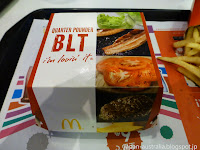



























.png)








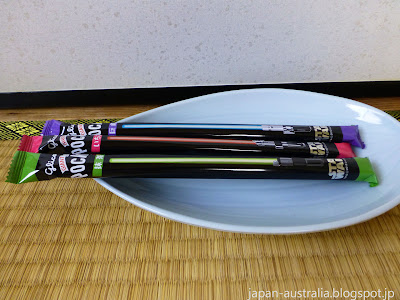

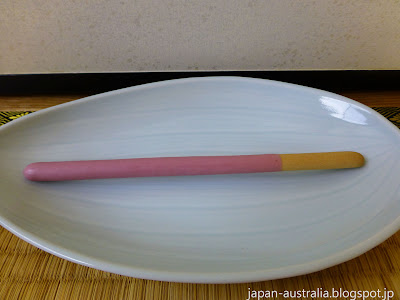



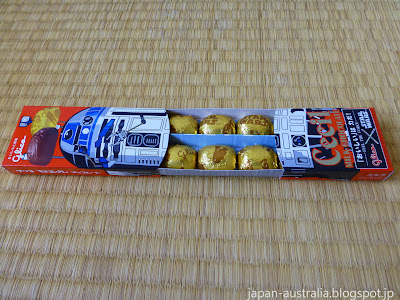


































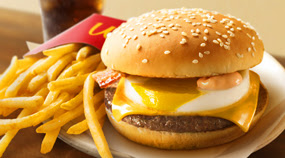
















.jpg)
























